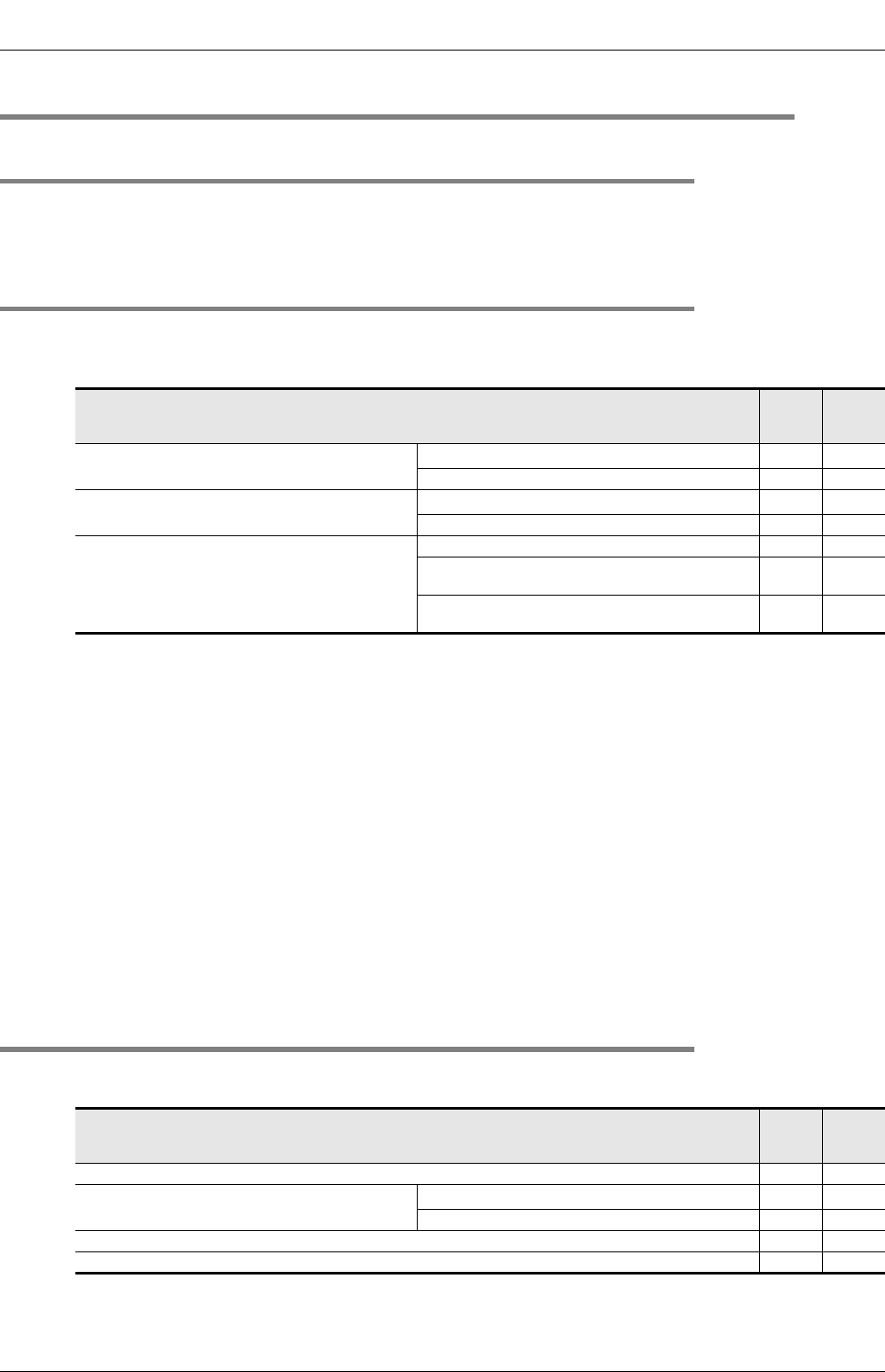
130
FX3S Series Programmable Controllers
User's Manual - Hardware Edition
14 Test Operation, Adjustment, Maintenance and Troubleshooting
14.3 Operation and Test [Power ON and PLC Running]
14.3 Operation and Test [Power ON and PLC Running]
14.3.1 Self-diagnostic function
When the PLC’s power is turned on, its self-diagnostic function starts automatically. If there are no problems
with the hardware, parameters or program, the PLC will start and the RUN command (refer to Section 14.2) is
given (RUN LED is lit). If any problems are found, the "ERR" LED flashes or lights.
14.3.2 Test functions
Functions of the programming tool to turn on/off the PLC devices and change the current values/settings are
effective or ineffective depending on the PLC status as shown below.
: Effective : Conditionally effective -: Ineffective
*1. Forcible ON/OFF
- The forcible ON/OFF function is effective on the input relays (X), output relays (Y), auxiliary relays (M), state (S),
timers (T) and counters (C).
- The forcible ON/OFF function can turn on or off the devices only for one scan.
While the PLC is running, the function is substantially effective in clearing the current values of the timers (T),
counters (C), data registers (D), index registers (Z and V) and in controlling the SET/RST circuit and self-retaining
circuit. (The operation to forcibly turn on timers is effective only when the timers are driven by the program.)
- The results of forcible ON/OFF operation performed while the PLC in the stopped state or performed for devices not
used in the program are retained.
However, the results of the operation performed for the input relays (X) are not retained because the relays refresh
input even while the PLC is in the stopped state. (They are updated according to the input terminal conditions.)
*2. Since the current values may be changed according to MOV instruction in the program and the
operation results, the most recently obtained values are retained.
*3. The current values of the file registers stored in the program memory cannot be monitored or tested
on the display module.
*4. Change of timer and counter settings. The settings of the timers (T) and counters (C) can be changed
only when the timers are driven by the program.
14.3.3 Program modification function
The sequence program can be transferred while the PLC is running or in the stopped state as shown below.
: Effective -: Ineffective
*1. Since the writing function is used during running, the programming tool must support the write during
RUN function, such as GX Works2.
For the writing function during running, refer to Subsection 5.2.5.
Item
In
running
status
In
stopped
status
Forcible ON/OFF
*1
Devices used in program
*1
*1
Devices not in use
Change of current values of timers, counters, data
registers and file registers
*3
Devices used in program
*2
Devices not in use
Change of settings of timers and counters
*4
When the program memory is the built-in EEPROM
When the program memory is in the memory cassette
and the PROTECT switch is on
--
When the program memory is in the memory cassette
and the PROTECT switch is off
Item
In
running
status
In
stopped
status
Batch writing of file registers (D) -
Writing of program to PLC
Partial modification of program
*1
Modification of whole program (batch writing) -
Writing of parameters to PLC -
Writing of comments to PLC -


















